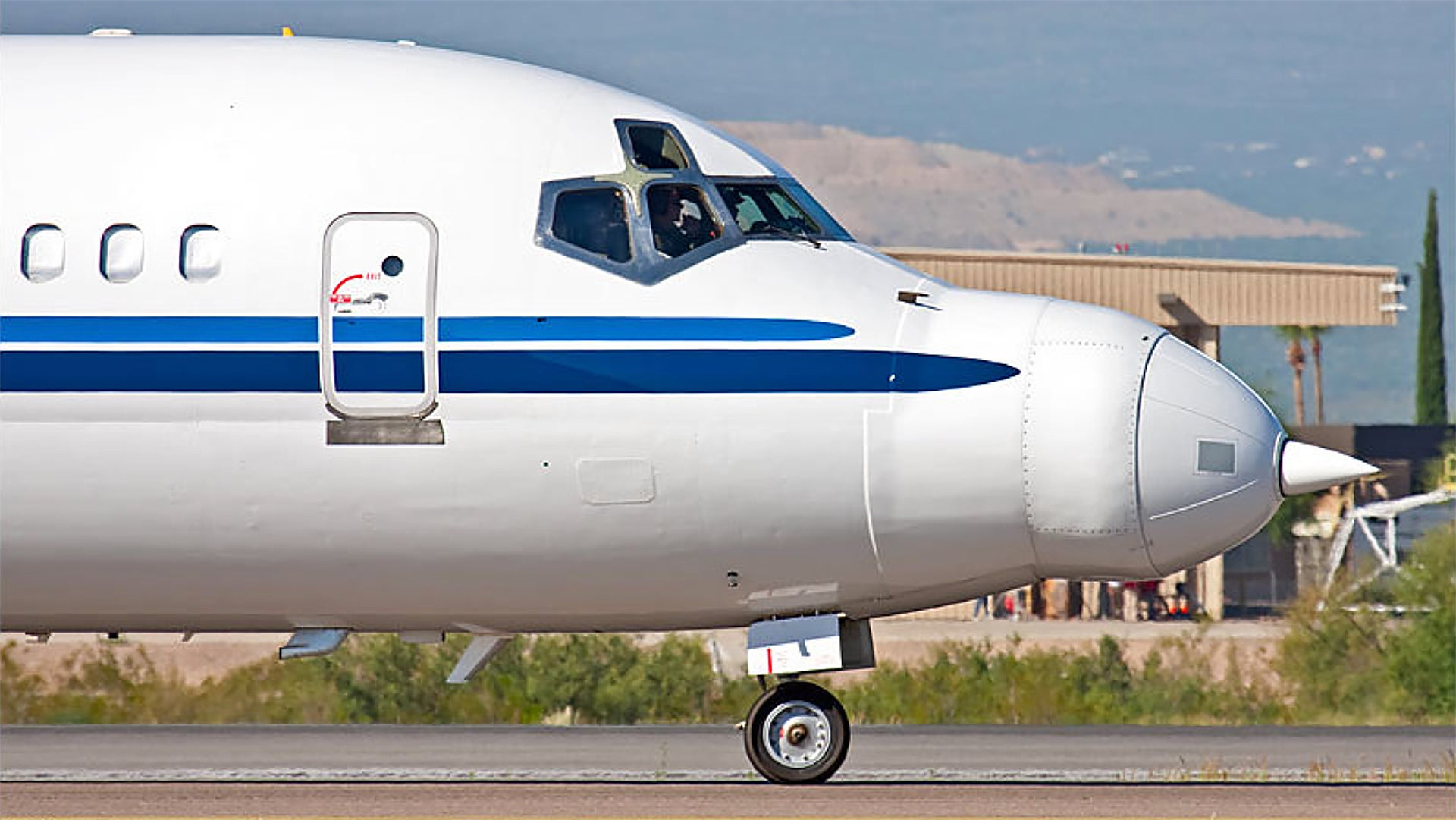The shadowy world of flying sensor test bed aircraft, both foreign and domestic, is a fascinating one. These highly modified airliners and business jets do critical work validating new radars, missile seekers, data-links, targeting pods and much more. Some of the shyest among them also work to quantify aircrafts’ thermal and radar signatures from an air-to-air perspective. But one of these aircraft—a gonzo-nosed DC-9, known as a NC-9D, with an interesting backstory—has been suddenly quite active and seems to suffer from a case of multiple identifies.
The DC-9 in question began its life 41 years ago as a typical airliner and went on to serve with Ansett, Spirit, and Midway airlines. Then in 1998 it was converted into a major avionics and sensor systems test bed by BAE and Raytheon. The jet had a major modification to its nose section, with a big bulbous fairing installed that can accept modular sensor payloads, such as fire control radars and missile seekers. The aircraft is also fitted with a large communications array that runs along its spine. A ventral antenna farm is also present on the aircraft as well.
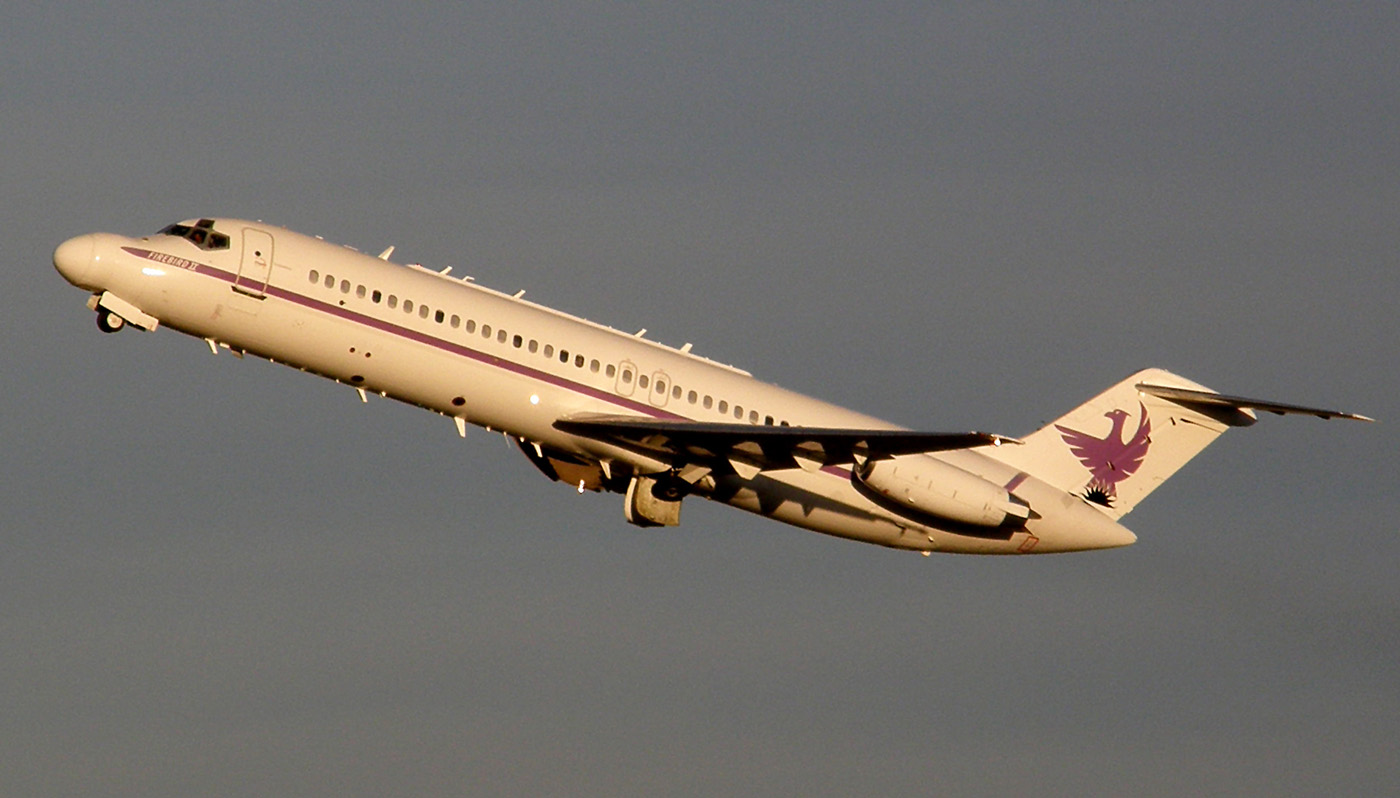
The aircraft was named “Firebird II” and it wore a high-profile purple and white scheme with a big phoenix on its tail. Its civilian registration was N932ML. In the mid 2000s the jet was put into storage at Mojave Air and Space Port before being brought back into service a couple years later in 2008, when it began flying sporadically for testing assignments once again. At some time there appears to have been an organizational change with how the aircraft was owned and operated.
According to Flightaware.com, the last time the aircraft was flown under its N number—which it supposedly still wears—was in 2011. According to FAA records the aircraft’s registration is not active and hasn’t been for some time. What’s most interesting is that the owner under its lapsed registration is listed as the US Navy with an address at Naval Air Weapons Station China Lake—the Navy’s leading-edge research and flight test center near Death Valley, California.
The jet, which has been repainted in a discreet blue and white motif, sans giant phoenix on its tail, also has the active Navy bureau number 168277, which odd. But what makes all this even more interesting is that it has been flying under a completely different N number, that being N879AD. This registration does not exist at all in the FAA’s database.
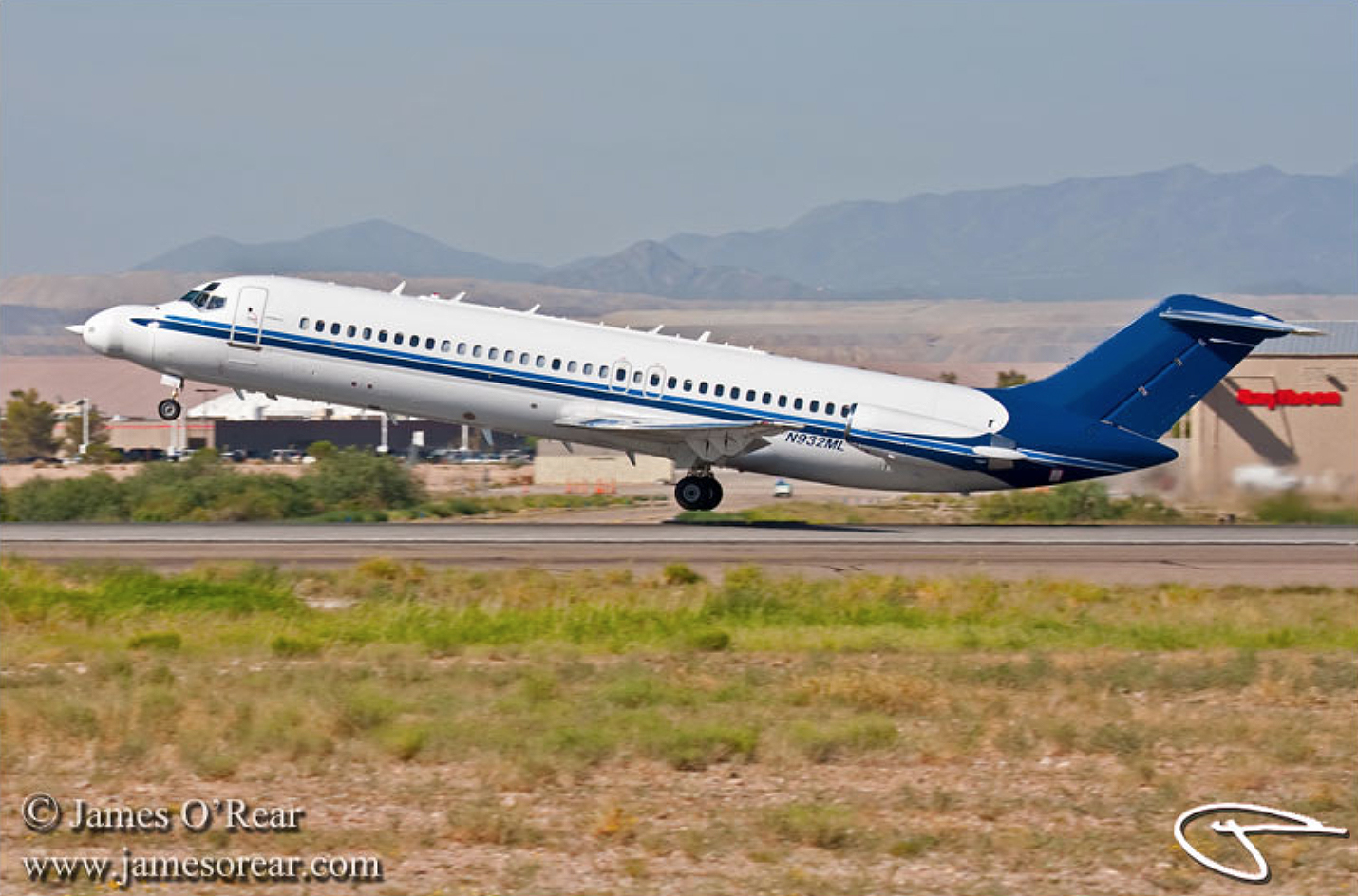
The aircraft shows up on Flightaware.com and on ADS-B flight trackers under this registration and it has been quite active over the last month and a half, flying between Tucson, Phoenix, Mojave, Holloman AFB, and NAS Point Mugu. The fact that it has been flying under this registration for at least four months largely discounts the possibility that it’s the result of some sort of error.
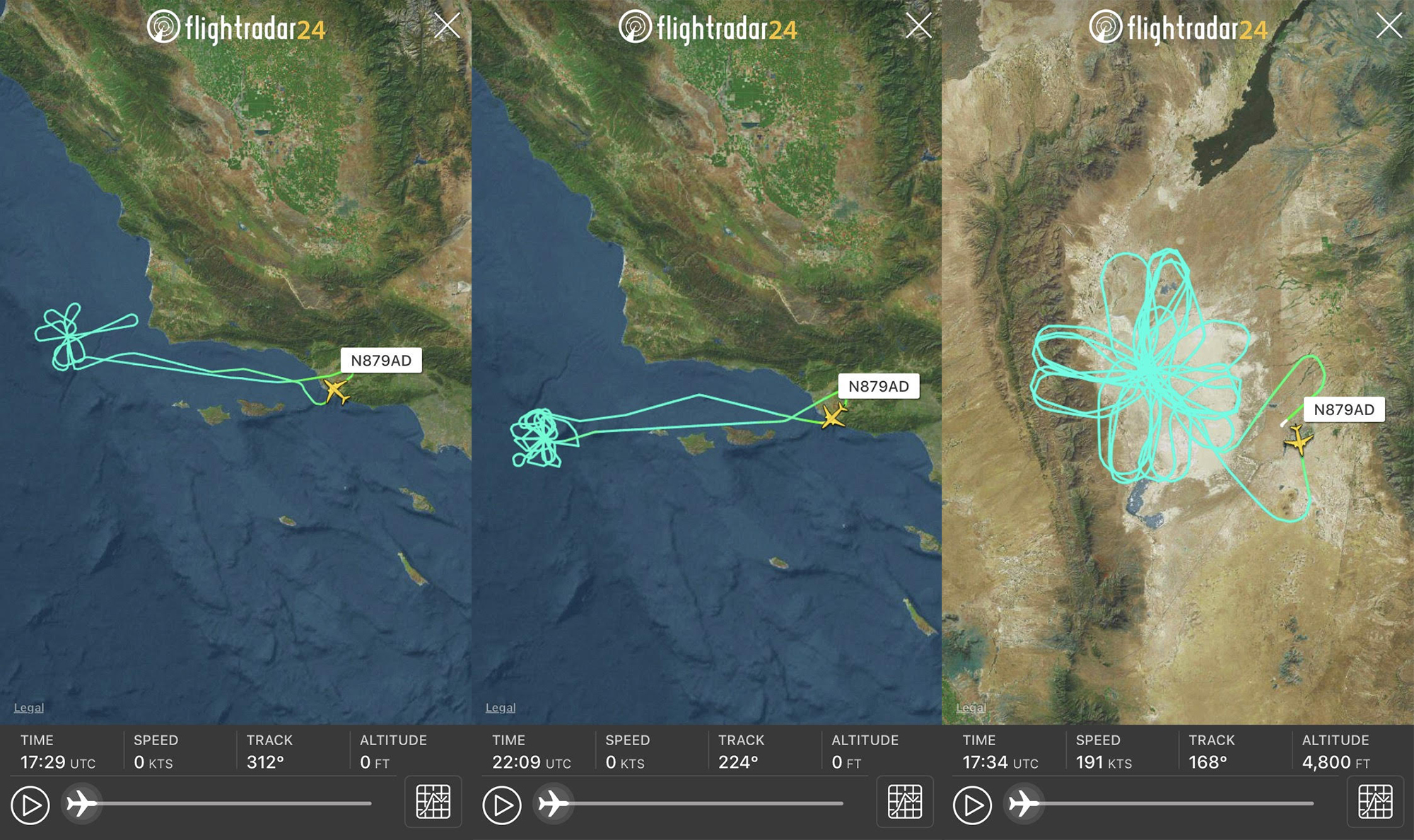
Convoluting things even more is that the aircraft also flies under the callsign “Flight Systems 01” which is a BAE Systems reference to their aerospace modifications and services division based at Mojave Air and Space Port. In the following air traffic control audio you can actually hear the aircraft as “Flight Systems 01” on approach to Tucson International and being cleared to taxi to Raytheon’s hangar.
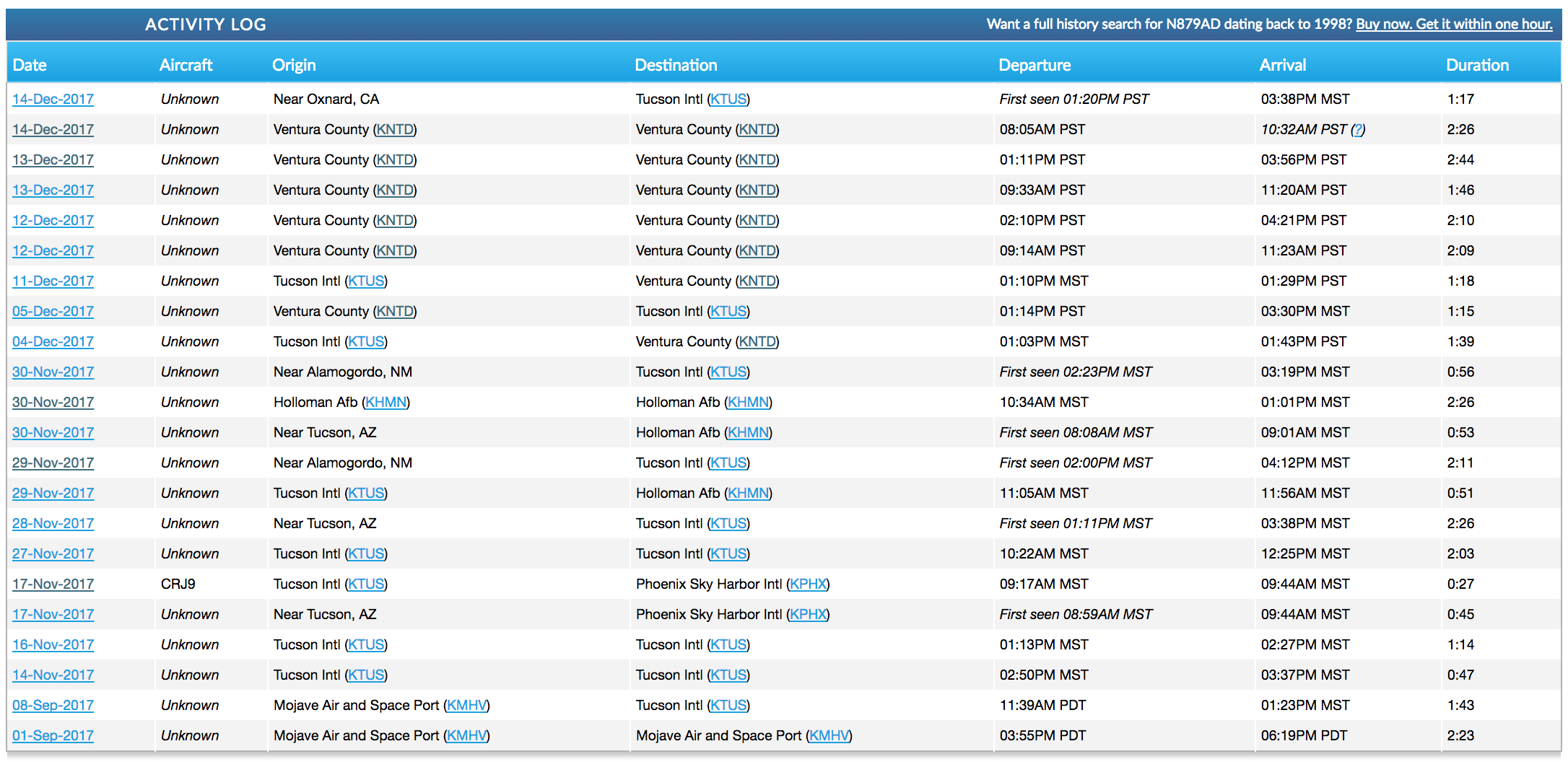
So what’s going on here? We really can’t say conclusively. Even the arrangement of who owns, operates, and provides testing systems for the aircraft remains unclear. It very well could be a convoluted arrangement where the Navy owns the jet but it is operated and modified by BAE Flight Systems, while Raytheon and BAE Systems provide sensors and systems for testing purposes.
These types of complex and often fluid arrangements between the DoD and defense contractors aren’t unheard of by any means when it comes to sensitive missions and projects, and they can be just as much a tool used to hide an aircraft’s true identity as one of operational convenience. But this still doesn’t explain why the aircraft is flying under a non-existent registration or why the registration number it wears isn’t even active or in most cases relevant if it is indeed a military aircraft.
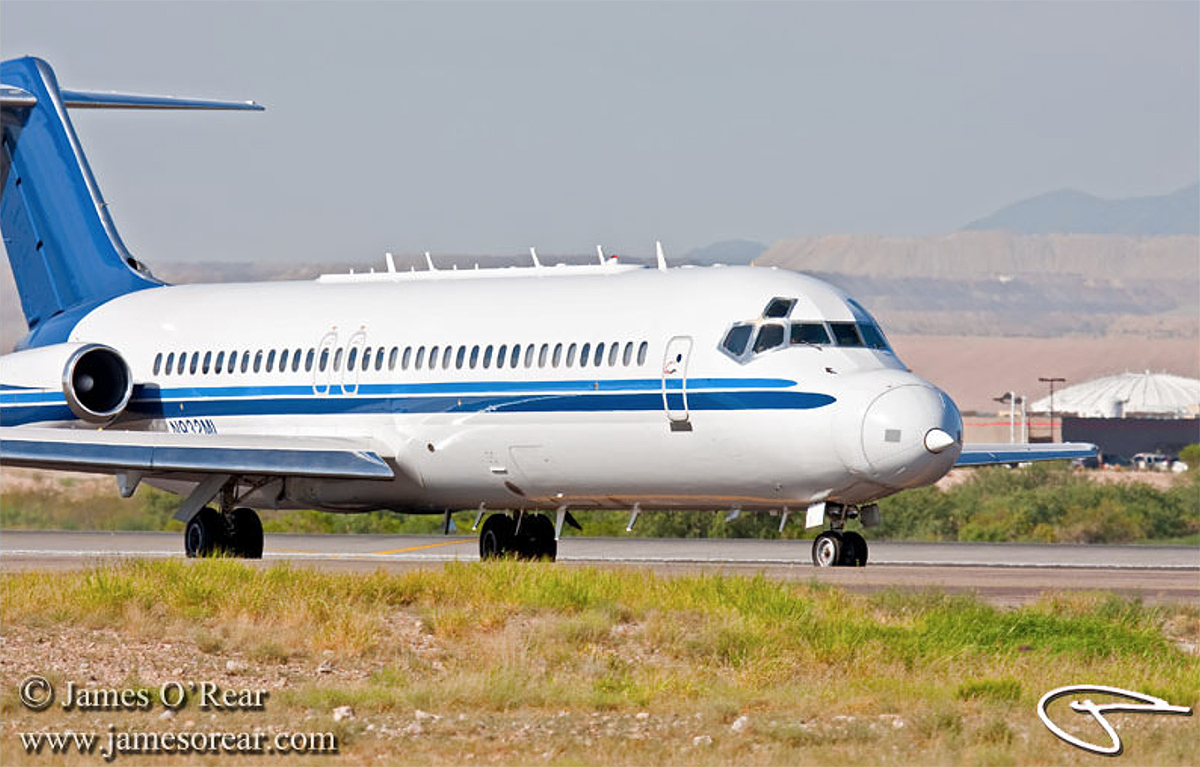
As for what the aircraft is up to we can only guess. But considering its primary mission is radar and missile seeker testing, and taking into account the places it has been and where it is currently operating, this is most likely the case. The question is what is it testing or what is it being tested against?
The Navy’s massive range complex off Southern California is used for all types of trials and exercises, from submarine launched ballistic missile and cruise missile tests to giving Navy SEALs a place to discreetly practice urban warfare. Live-fire occurs on San Clemente Island and a whole host of unique and elaborate hardware supports testing out in the range complex.
Recently there seems to be a spike in testing in the area, and some pretty shy test-related assets from the USAF have been caught packing exotic sensors and electronic warfare systems while possibly transitioning eastward after missions over the California coast. With this in mind, could this aircraft be supporting a highly classified program? It is possible, especially considering we know some big initiatives are underway, including the B-21 bomber program. Even the RQ-170 Sentinel has a presence nearby at Vandenberg AFB. Such an aircraft would offer an ideal detection challenge for any new radar or missile system.
Then again the NC-9D could be testing a new missile seeker design or fire control radar system against far less exotic targets, or even new data-link systems, all of which we know are currently under development.
If anything else, the peculiar comings and goings of the NC-9D are just another reminder of the massive although little seen test apparatus that supports America’s sprawling defense industrial complex. With peer-state competitors rising in power, an all-out war on the Korean Peninsula looming, a big boost in defense related spending, and a new focus on accelerated weapons testing, it’s likely we will see a lot more of this aircraft and others like in the coming days, months, and years.
A huge thanks to our friend James O’Rear for sharing his great photos with us. Please check out his website at www.Jamesorear.com.
Contact the author: Tyler@thedrive.com
